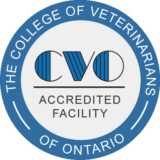Reducing Risk of Displaced Abomasum (DA)
Often referred to as a ‘twist’, a displaced abomasum (DA) is an expensive event on the farm. Associated costs include:
- Loss of milk production – 700-1200lb less milk produced in the lactation
- Veterinary costs – surgery, medicine
- Replacement costs – due to increased risk of culling or death
What causes a DA?
DAs is a multifactorial disorder, at times with a complex web of contributing factors – some of which I have listed below. I find it helps to think about risk factors and associated management practices within the following formula:
↑Space in Abdomen + ↓ Motility & ↑ Gas in Abomasum = ↑ Risk of DA
Risk factors associated with an increase in abdominal space
- Deeper barrel conformation of modern cows
- Calving (i.e. loss of calf weight, placenta, and fluids)
- Reduced dry matter intake and rumen fill
- Calving time (i.e. natural drop in dry matter intake)
- Concurrent disease-causing inappetence, e.g. metritis, mastitis, pneumonia…
- Ration issue, e.g. wet silage, palatability, high energy/low fibre, mixing errors
- Bunk issue, e.g. competition, infrequent push-ups, limit feeding
- Cow comfort, e.g. stall design, ventilation, heat abatement
- Social stress, e.g. pen movements in the transition period
Risk factors associated with low abomasum motility and excessive gas accumulation
- Hypocalcemia (i.e. calcium required for contraction of all muscle types), e.g. dry cow nutrition, parity (lactation #), genetic predisposition
- High rumen volatile fatty acids (VFAs), e.g. high energy/low fiber ration, sorting
- Ketosis (low glucose and insulin lead to reduced abomasum motility), e.g. over-conditioned cows at freshening (body condition score >4), dry cow nutrition
How do I reduce the risk of a DA in my herd?
It is not realistic to expect the elimination of DAs, but rather a target of <4% annually is achievable. Review your farm protocols and engage your vet and nutritionist farm advisors on the following subjects:
- Monitoring, preventing and treating fresh cow illnesses
- Nutrition management
-
-
- Ration formulation for optimal dry matter intake and suitable fibre/energy levels
- Critical control points for delivery of a consistent and appropriately processed ration
-
- Regular dry matter testing
-
- Ensuring feed changes are gradual and are preceded by forage testing and ration formulation
Facility and cow comfort strengths and opportunities – e.g. stall design, social groupings, bunk competition
– Dr. Shannon Walsh
If you have any questions on these or other topics, please do not hesitate to contact one of our Veterinarians.




